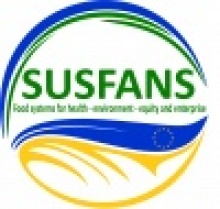Analyzing EU crop production: Finding the most important drivers
Crop production is the most crucial primary agricultural production activity for both food and nutrition security. In 2011, around 70 percent of the calories per capita and per day came from plant-based products. Besides, its importance for the direct human consumption, crop production is also crucial for producing feed for livestock and, increasingly, for aquaculture. Most generally, crop production is primarily determined by the interplay of land use and crop yields. Both land use and crop yields are affected by various drivers.
In their Deliverable 4.4 “Preliminary report on T4.4: drivers of crop production”, SUSFANS researchers Andrea Zimmermann and Catharina Latka of the Institute for Food and Resource Economics of the University of Bonn provide a qualitative assessment of drivers of crop production and preliminary work for a quantitative analysis of crop production in the EU. The paper’s focus is on the most important crops in Europe in terms of production amount, i.e. cereals, potatoes, sugar beet and important crops for nutrition security and the SUSFANS case study, vegetables and fruits.
Crop production in the EU
Cereal production in the European Union accounted for about one third of total utilized agricultural area in 2013, whereas grassland, i.e. for pasture, meadow or grazing covered 34.1 percent.
From the total EU cereal production, almost 45 percent are wheat, followed by grain maize (23.4 percent) and barley (18.2 percent). Triticale and rye and maslin have production shares below 5 percent (Figure 1). Among the main fruits and vegetables produced in the EU are tomatoes, carrots, onions, apples, peaches and citrus fruits. At EU-28 total, the fruits and vegetables with the highest quantitative production are tomatoes, followed by apples and citrus fruits.
The researchers identified the important direct and indirect drivers for crop producers. Animal-based food production is an example of an indirect driver. “A higher economic growth is correlated with higher consumption of animal products. This leads to an increased crop production. This is currently seen as one of the two challenges to future crop production”, explains Andrea Zimmermann of the University of Bonn. Nearly as relevant is the global population growth. “Since taking more land into production is not an alternative for meeting increasing global food demand, it is often argued for the ‘sustainable intensification’ of crop production in the meaning of yield increases without harming the environment. But how this can be achieved and what it means for European agriculture is still very open.” But, regulation, prices and technology play a key role too.
Which drivers have the most impact?
“A hierarchy of their impacts on crop production is almost impossible to identify”, explains Zimmermann. Quantitative assessments considering all the drivers are currently not available. However, some of these drivers are frequently taken into account in integrated assessments of the agricultural sector. The drivers usually considered are technology, population developments, global GDP growth, climate change and, partly, agricultural and trade policies.
In particular, technical progress and its potential impact on crop production is very difficult to assess and is usually only addressed in a very stylized manner in economic agricultural sector models.
However, due to its severe impact on the sector, research particularly dedicated to technical progress and its effects is ongoing. Currently, also progress is being made in explicitly considering agricultural and policy changes and other adaptations to climate change in models.
Prices and, partly, management, are usually endogenous in large-scale integrated assessments of the agricultural sector which emphasizes their importance in the modelling work and the sector itself. Natural resource availability is the most crucial and basic factor for crop production. It is usually only considered indirectly. Culture and lifestyle changes are sometimes considered in terms of demand scenarios. They can impact the sector, but their impacts are usually smaller than those of other global drivers like climate change or population.
Contract opportunities and vertical integration are usually not considered in integrated assessments and likely less important regarding their effects on production per se. Producer and farm characteristics can severely affect production on individual farms.
However, they are difficult to cover in large-scale assessment and might cancel out on average. Management has recently received a lot of attention in the context of climate change adaptation and modelling work is in progress.


Comments
Add new comment